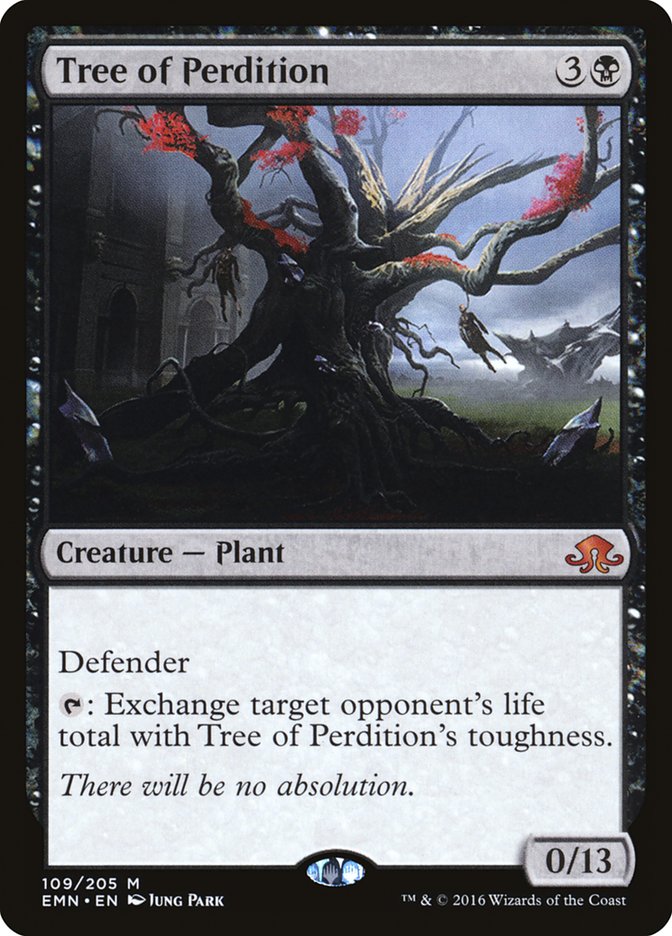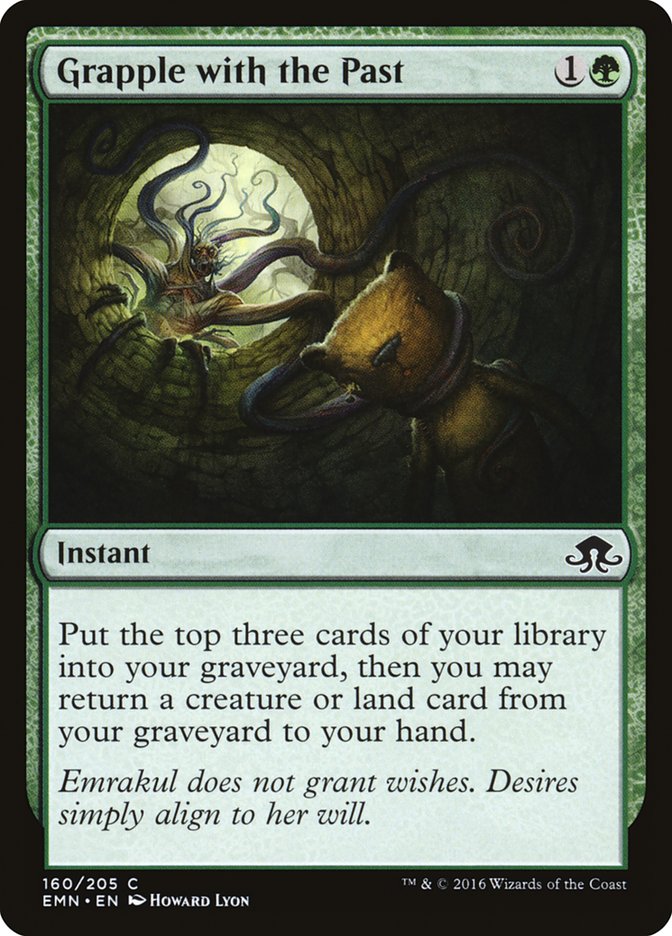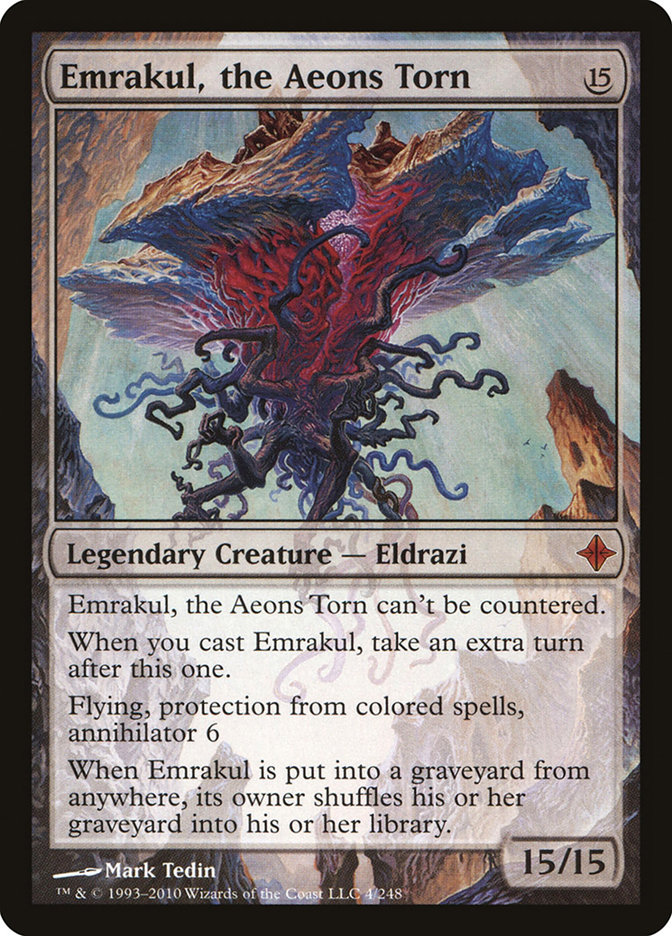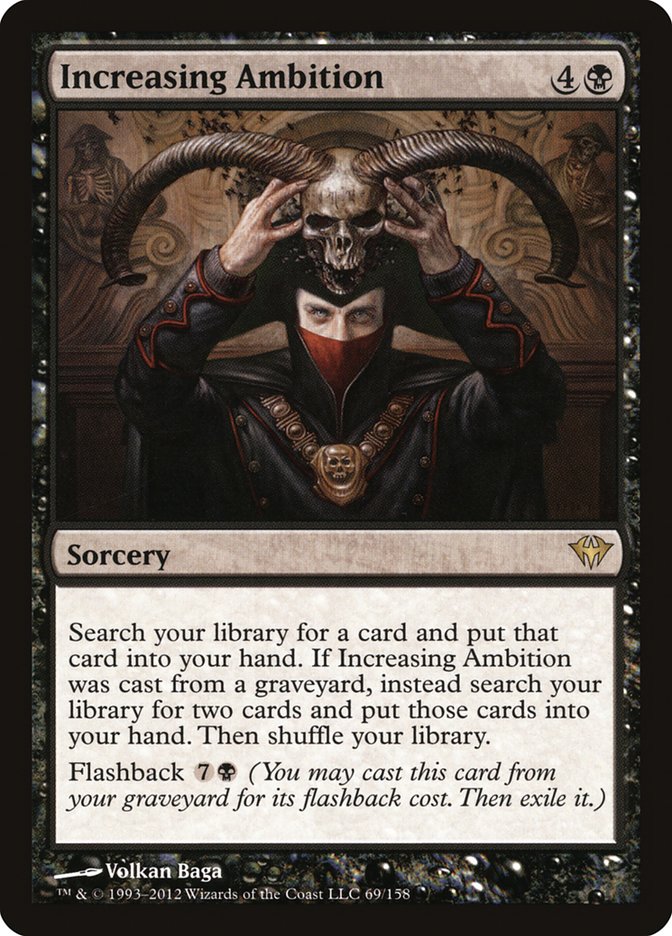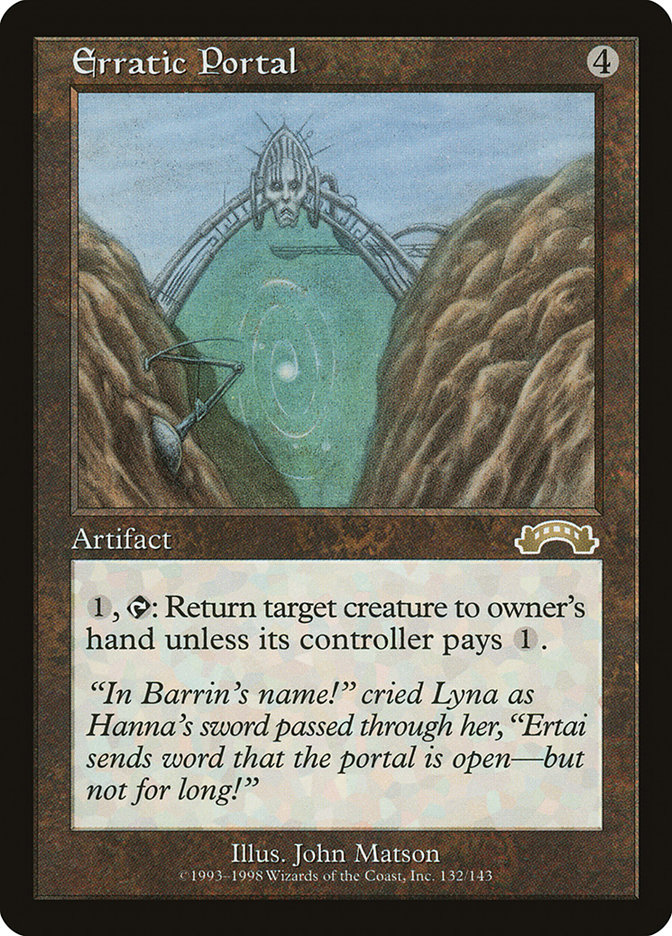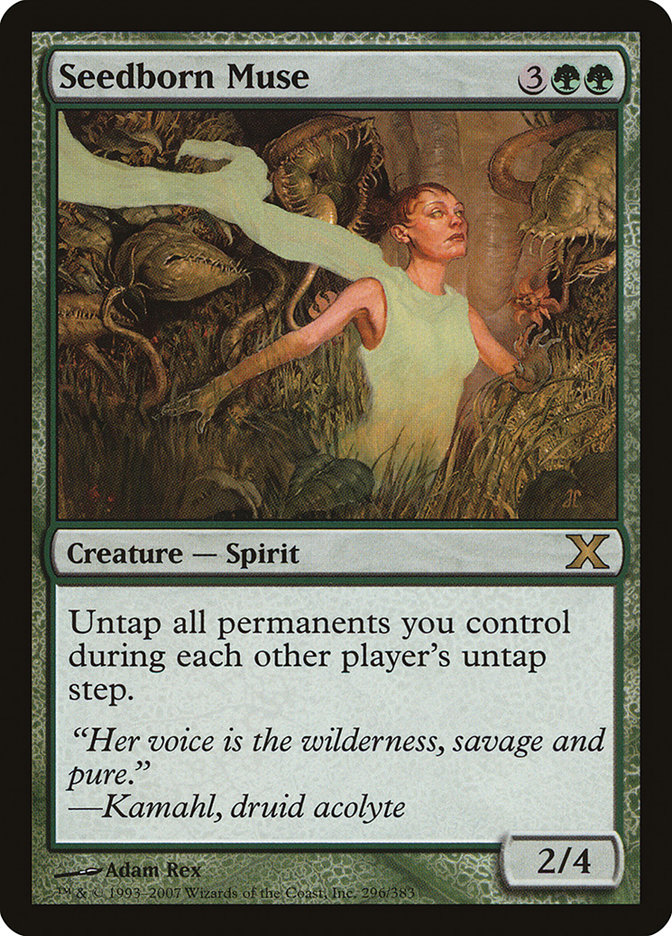It is Eldritch Moon preview time, and this is a set dripping with flavor and unique cards that Commander players just have to love. Who even knows how the meld cards work? Legendary Angels on the streets, Big Furry Monsters in the sheets? The set is full of cards that are a story all to themselves… and also callbacks to the last time we wandered across this particular plane. Check these out:
Commander has a few powerful cards that reset an opponent’s life total – Magister Sphinx and Sorin Markov are notorious in the format for this, even if they aren’t especially as common as they used to be a few years back. Tree of Perdition sets life totals to thirteen instead of ten, but it also messes with multiple opponents if you want it to. How weird is it that the card becomes more powerful when it is afflicted by the debilitating effects of cards like Godhead of Awe or the lowly Humble?
But no matter how much this set has us Commander players jumping up and down in anticipation for Prerelease weekend so we can finally lay our hands on this sweet, sweet cardboard crack, it also casts a huge shadow over the format as well. A shadow shaped something like this…
Emrakul, the Aeons Torn was quickly proven to be too good for Commander, and that Flying Spaghetti Monster cost a full fifteen mana to cast if you played with it at the helm of your deck. This Emrakul starts at the oh-so-unlucky thirteen mana instead, but in actuality is likely to cost far less – even in a colorless deck it’s pretty trivial to get an artifact, a land, a creature and an extra something in your graveyard to drop that mana cost into the single digits. (Heck, if that something is an Eldrazi Conscription, Not of This World, Skittering Invasion, or All Is Dust, you get two card types for the price of one!)
Despite costing fifteen mana, the original Emrakul was so good that she got banned in Commander, and this second time around it’s not hard to see how you might spend ten or less instead. And as of the recent unification of the Commander Banned List, there is no longer such a category as “Banned as a Commander” anymore – if Her Noodly Appendage is too good for the format at the helm of a deck, the only way to correct for that problem is to ban her from the format entirely.
We all want to get to play with our shiny new toys, and unlike things like Worldfire that are demonstrably antithetical to the format and have to be banned before they’re even released, we will have some time to play with her and find out for ourselves. Emrakul, the Aeons Torn took two set releases to earn removal from the format, and even Griselbrand, aka “Yawgmoth’s Bargain As Your Commander,” got a few months of play at the helm of ridiculous combo decks before earning a well-deserved exit. (Little did I know it when I wrote an article entitled “The Worst Thing You Can Still Do To People” arguing that Ad Nauseam should be banned in the format, a ridiculous Commander was about to be released to take the deck over to ludicrous speed… but even in a shell like that, Griselbrand was legal for a small window of time.)
This Emrakul is dangerous, of that there is no doubt. Worse yet, colorless mana is a thing now, so you get extra benefits available which had never been allowed before. Colorless instants are a thing now, your Solemn Simulacrum can search for basic Wastes, and you can harness the unique aspect of colorless (rather than merely generic) mana rewards us with cards like Warping Wail or Reality Smasher that pay us back for committing to colorless mana without being stuck with a mono-artifact deck.
Mindslavering opponents is dangerous too – Worst Fears is borderline-playable at eight mana and doesn’t leave a 13/13 flier on the battlefield, plus it includes an auto-exile clause so that we don’t abuse its comparatively low cost. If we want to lock someone with Mindslaver recursion, we’ll need thirteen mana, one of which is blue and another of which is Academy Ruins, though I suppose we can also get there if we add another layer of complexity and replace Academy Ruins with Buried Ruin + Crucible of Worlds.
In the six months in which Emrakul was legal, casting Emrakul was demonstrably the best thing you could imagine doing. Maybe everyone didn’t know it, but the format’s end-game stages were actually a fight over assembling Emrakul plus either protection or recursion – protection if you wanted to rely on the Annihilator trigger to be “good enough,” recursion like Erratic Portal if you wanted to literally lock out the entire table and take infinite turns. Emrakul of course protected herself thanks to being immune to colored spells and uncounterable, so the weakest link would be whatever permanent was paired with her to allow you to achieve infinity… and some people didn’t even think it was worth trying when a couple of counterspells and a Time Walk that lets you untap your lands would cover anything that actually could take her out around her built-in defenses.
You didn’t have to know this was the secret end-game at the time; normal people playing normal decks could of course still win normal games even against people in the know. It just happened to be that you’d win more games if you were in the know than if you weren’t… if you planned your deck around the nut-high end-game finisher, you started with a bit of a higher expected win rate than if you didn’t.
People would still die to other cards and the format was still plenty diverse, but it was also true that games involving an Emrakul were generally won by said Emrakul. Emrakul could be beaten, but you had to know how and you had to plan for it in the deck design phase which really requires being “in the know” – even an uncounterable monster is exiled forever by an appropriately placed Time Stop, and niche cards like Mindbreak Trap that don’t normally see play suddenly had an extra level of utility because they could stop the worst thing that could happen to you.
An ounce of prevention could also be worth a pound of cure… while I wasn’t willing to go so far as to play Ruination or Winter Orb in any of my decks, at the time I was finding myself making unusually antisocial decisions as a response to the format’s subtle shift. Cards like Dwarven Miner that are normally against what I am trying to do in the format seemed acceptable in a non-Emrakul deck to keep opponents under that critical fifteen-mana level in the first place. Nobody likes land destruction pointed their way, but nobody has the right to complain about it either when they’re “merely” being held around the ten-mana mark.
This Emrakul is very good, but this Emrakul is not that Emrakul.
Yes, an average casting cost of about ten mana is a whole world less than the fifteen mana required to tear the aeons. I’d argue that hitting the fifteen-mana mark takes about twice as much work as you need in order to hit the ten-mana mark. Yes, you can get there easily with cards that literally double your mana like Caged Sun, Mirari’s Wake, or Boundless Realms, but you need to actually draw your mana-doubler and keep it on the battlefield, which is far from a given. “Conventional” means that “patience plus Thawing Glaciers” or “card-drawing with an Exploration out” will still take you several additional turns to build up to that critical mass needed to deploy the Eldrazi menace.
In the time of the original Emrakul, my favorite control deck – the original build of my Ob Nixilis deck – went from being a patient two-hour control deck to a calculating one-hour combo deck. The existence of one card in the format literally changed not just the end-game plans I intended to deploy but the tempo the deck was trying to build up and the positioning it took on what things actually mattered to it, changes that lopped an hour off of the amount of game I expected to play as I ground out a win.
The deck’s usual “card advantage, then find a way” route to victory turned into “card advantage, battlefield control, tutor twice, and close it out,” even though I hadn’t intended to fall down that slippery slope into combo-deck land. Combo decks don’t intend to spend an hour playing good Magic before they win, after all; the deck was only a combo deck because the ultimate finisher had a combo feel to it and the deck was interested in acquiring whatever is best in life.
Emrakul, the Promised End is very good, but she is not “the best thing you can possibly do in the format.” The low cost and powerful, uncounterable effect are very potent, and if you’re doing it right you shouldn’t really care that you opponent gets to take an extra “regular” turn after your Commander wrecks them with a Mindslavered one. You can do a lot of damage to your opponent by taking control of one of their turns, using their spells to wreck them and throwing all of their creatures away to sacrifice effects or suicidal attacks… or maybe you’ll exhaust them of everything they have while using their resources to kill another player, leaving them with a junk card on top of their deck and no hope of getting back into the game.
This may feel unsavory, but it is ultimately fair Magic. Mindslavering somebody once is dramatic and powerful; it’s in the part where you Mindslaver someone over and over again as if doing so were itself a victory condition where things begin to go wrong. Even now there is still theoretically a Blue Tron deck in Modern that ends the game by assembling the Mindslaver lock, demonstrating its repeatability, and relying on the fact that their opponent cannot actually interrupt the cycle and will run out of deck first as its primary victory condition. Emrakul, the Promised End is very bad at Mindslavering all of your opponent’s turns because a counter to that is built in – they will always get an extra turn before you get to untap and take another normal one, meaning you would need to do some pretty ridiculously narrow things in order to treat this ability as your primary path to victory.
Seedborn Muse to untap whenever your opponent untaps and something like Winding Canyons or Vedalken Orrery that lets you cast Emrakul at instant speed and something like Erratic Portal to put Emrakul back in your hand over and over again and Emrakul too? Sure, in so doing you could technically choose one other person to give infinite turns and control that player to take out all of your opponents and then repeat the process, controlling them even during the (infinite) extra turns you are granting them until they deck themselves out… but the number of hoops you have to jump through to assemble a combo like that is far, far smaller than the number of hoops you have to jump through for most other Commander combos.
Two-card combos that kill one or more players guaranteed are not particularly rare in this format; we don’t ban all of the pieces because there are too damn many to actually ban thanks to the nature of this game and its more than 10,000 individual moving parts. We’ve decided there is no benefit to have a large and unwieldy banlist hundreds of cards long telling you that Sanguine Bond and Mikaeus, the Unhallowed are too good for the format because something else can technically abuse them, and that’s just with the two-card combos. Almost anything can be part of a four-card combo.
Barring a ridiculously convoluted Rube Goldberg machine to vanquish all of thine enemies by taking infinite Mindslavered turns – one which, it’s worth noting, requires at least one colored card and thus does not even let you start with one of your combo pieces “for free” by playing Emrakul as your Commander – we have a natural immunity to this card being problematic simply due to the nature of the Commander format. Even that Rube Goldberg machine has one obvious flaw – unlike her predecessor who tore the aeons in the first place, Emrakul, the Promised End is not uncounterable. The types of card required to halt you in your tracks are not actually a very small niche; any old counterspell will do. If your infinite combo folds to an instant-speed Rout, it’s not actually a problem.
But the format possesses a far simpler inoculation protecting it: you could theoretically point a single Mindslaver effect at one opponent, use them to kill the other two opponents, and then cripple them so that you can then beat them from there… but that doesn’t make it likely. An opponent who can just kill multiple opponents and yet has declined to do so is actually pretty rare; people you’re trying to kill tend to be able to push back at least somewhat. Maybe you’ll be able to “killjack” an opponent who would otherwise be winning the game on their next turn by using this card at precisely the right time, but that is not actually something you’re likely to know in advance and it’s definitely not something you can really plan for.
It is far more likely that you’ll “just” get a solid benefit from the card, definitely getting to wreck the player whose turn you are taking and probably gaining a significant advantage by messing with the other two players as well. Any plan that begins by wiping two opponents off the battlefield and then somehow neutralizing such a threatening battlefield after-the-fact so that you don’t yourself die in that crucial additional turn is flawed. Those other two players possess some measure of agency themselves, and whether it’s to defend themselves from the impending onslaught or to wreck you right back so that such a one-sided attack will wind up costing you the game too, it’s important to remember that opponents do things and can generally mess with you just as certainly as you can mess with them. Your best-laid plans may simply end in mutually-assured destruction, and that’s just with the ideal use of the card.
For all of these reasons, I would argue that Emrakul, the Promised End will land on the side of the Angels in this format. Yes, she is absolutely powerful – shouldn’t an Eldrazi Titan be so? She is an eater of worlds. “Safe” was never the target that was being aimed at. “Safe” is not a characteristic we usually associate with spells possessed of double-digit casting costs. They are expensive literally because they are not supposed to be safe! But is she too good?
I think not. Very good is not a problem, whereas too good is – Emrakul, the Aeons Torn deserved her ban because the “secret” that she was the nut-high trump-all was just beginning to warp the format as everyone else caught on to the fact. Emrakul had to go because the entire format was starting to be rebuilt around her; you had to play her or you had to beat her if you wanted to succeed, and if you were smart you preferably were doing both. Emrakul, the Promised End lacks the hallmarks necessary to warp the format – other players get to take turns too, other players get to play cards that interact with you card. As solid as that Mindslaver effect is, you don’t see people clamoring for the other possible Mindslaver effects to be banned because they’re warping the format.
This particular Mindslaver effect has a balance built in to prevent its abuse from being a hard lock, as it always offers an opponent a turn free of your influence for every turn you assert control over them. It’s certainly the most attractive Mindslaver effect we’ve seen to date – it’s not hard to look at that 13/13 flier of yours and think it is well worth the value of the extra turn you give your opponent, as you’ll have reaped so many cards’ worth of advantage already and presumably can make sure that extra turn is pretty vanilla so you just don’t care.
Being stapled to a 13/13 flier gives us far more upside than any Mindslaver which has come before, and we will see a lot of people playing this Emrakul because she is interesting, she is shiny, and she is new. But eventually that new-card smell will fade and she will be just another top-level expensive threat in a format already filled to the brim with them; her presence in the format will not dictate how the format has to be played if you wish to survive.
Want to submit a deck for consideration to Dear Azami? We’re always accepting deck submissions to consider for use in a future article, like Benjamin’s Oona, Queen of the Fae deck or Alok’s Shirei, Shizo’s Caretaker deck. Only one deck submission will be chosen per article, but being selected for the next edition of Dear Azami includes not just deck advice but also a $20 coupon to StarCityGames.com!
Email us a deck submission using this link here!
Like what you’ve seen? Feel free to explore more of Dear Azami here, in the Article Archives! And feel free to follow Sean on Facebook… sometimes there are extra surprises and bonus content to be found over on his Facebook Fan Page as well as previews of future columns!



